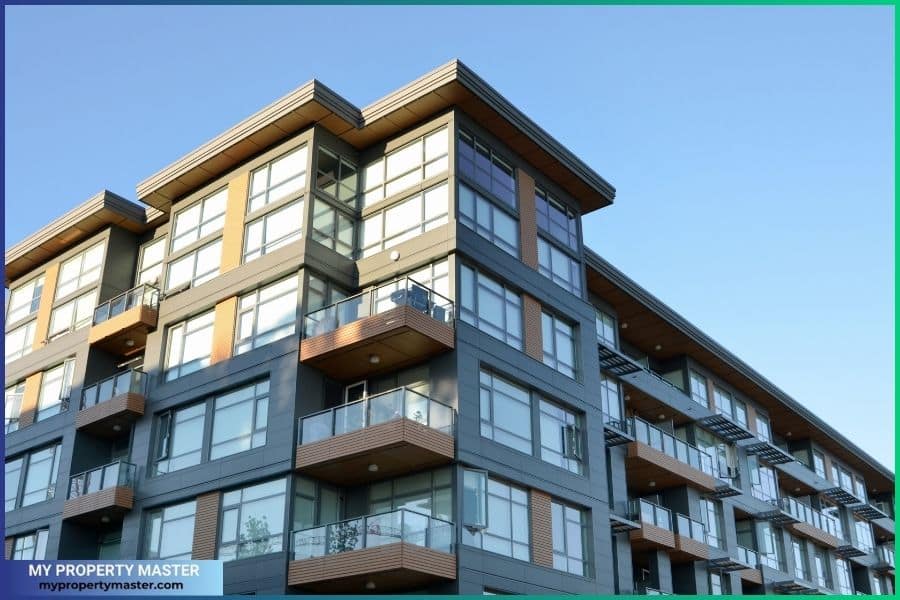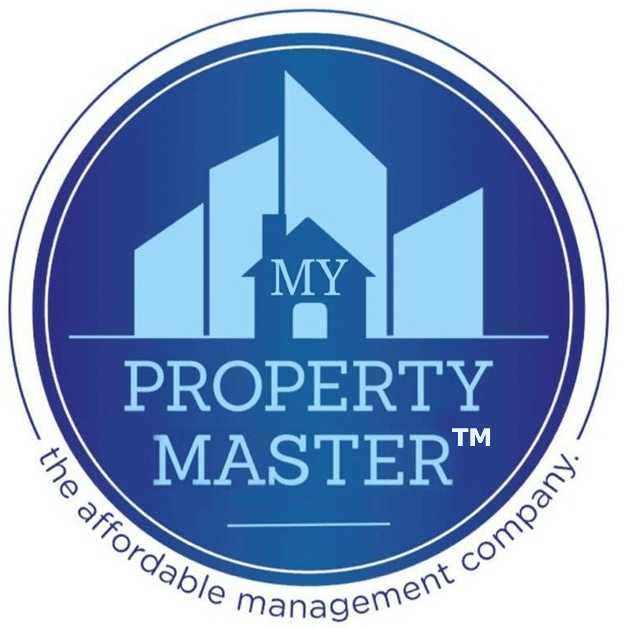Condo fees and HOA fees have some similarities, but they are different. I will discuss condo and HOA fees and their differences in this post.
What is a condo or condominium?
Before I discuss condo fees, you need to understand what condos are.
A condominium, often called a condo, is a type of real estate property where individual units or apartments are owned by individuals, and common areas and facilities are jointly owned and maintained by all the unit owners within the complex. Condominiums can take various forms, including residential buildings, townhouses, or commercial spaces.

In a condominium, each unit owner typically has a deed to their unit and shares ownership rights to the common areas, such as hallways, elevators, recreational facilities, and landscaping. Common areas and amenities are managed and maintained by a homeowners’ association (HOA) or a condominium association comprising the unit owners. I will discuss more details about HOA in the next section.
Condominium ownership provides a middle ground between owning a single-family home and renting an apartment. Unit owners are free to make decisions about their units but are also subject to rules and regulations established by the condominium association. These rules often cover maintenance responsibilities, pet policies, and architectural guidelines.
Condominium living is prevalent in urban areas and can offer amenities and conveniences not typically found in traditional single-family homes, such as shared swimming pools, fitness centers, and security services.
Read also: Key considerations for landlords when renting a house with a swimming pool.
What is the condo fee?

Condo fees are regular payments made by condominium unit owners to cover the costs of maintaining and managing the common areas and shared amenities within a condominium complex. These fees are typically mandatory and are paid monthly or quarterly.
The specific services and expenses covered by condo fees can vary depending on the condominium association and the amenities offered within the complex. Common elements covered by condo fees may include:
- Maintenance of Common Areas: This includes landscaping, snow removal, cleaning of shared spaces like hallways and elevators, and general upkeep of exterior areas.
- Utilities: Condo fees may cover the cost of utilities for common areas, such as lighting in shared spaces, water, and sewer.
- Building Insurance: The condominium association often carries insurance coverage for the overall structure and common areas. However, individual unit owners may need separate insurance for their personal belongings and any modifications made to their unit.
- Reserve Fund Contributions: A portion of the condo fees may be allocated to a reserve fund. This fund helps ensure the association has adequate funds to address significant maintenance or capital improvement projects.
- Management Fees: If the condominium association hires a professional management company (like us) to handle administrative tasks, part of the condo fees may cover their fees.
It’s essential for prospective condominium buyers to carefully review the condo association’s financial documents, including the budget and reserve fund, to understand how the condo fees are allocated and if there are any planned assessments or fee increases. The amount of condo fees can vary widely based on factors such as the size of the complex, the amenities provided, and the level of service required.
Condo fees are also very similar to CAM fees. However, property owners pay the condo fees. On the other hand, tenants pay the CAM fees.
Related: What is the CAM fee, and how is it calculated?
What is an HOA?

An HOA, or Homeowners’ Association, is a private organization established within a residential community, typically a subdivision, condominium complex, or planned development. The purpose is to manage and govern the common areas and the community’s overall appearance. Homeowners within the community automatically become members of the HOA upon purchasing a property.
Key features of an HOA include:
- Membership: All property owners within the community are usually mandatory members of the HOA. Membership is typically automatic upon purchasing a home within the HOA’s jurisdiction.
- Covenants, Conditions, and Restrictions (CC&R): The CC&R is a set of rules and guidelines established by the HOA to regulate the appearance and use of properties within the community. These rules may cover architectural standards, landscaping requirements, and other community-specific regulations.
- Assessment Fees: Homeowners must pay regular fees to the HOA, often called assessment fees or dues. These fees fund the association’s operations and maintenance of common areas and may contribute to a reserve fund for future expenses.
- Common Area Maintenance: The HOA is responsible for managing common areas and amenities within the community. This may include parks, swimming pools, landscaping, and recreational facilities.
- Architectural Control: HOAs often have architectural review committees to ensure that any modifications or additions to individual homes comply with the established guidelines and maintain a cohesive look within the community.
- Enforcement of Rules: The HOA enforces the community rules and regulations. It has the authority to issue warnings and fines. Even HOA can take legal action against homeowners who violate these rules.
- Community Decision-Making: The HOA typically holds regular meetings where members can discuss and vote on community matters. Board members, whom the homeowners elect, oversee the HOA’s operations.
While HOAs provide a structured framework for community management, opinions on them can vary. Some homeowners appreciate the sense of order and the maintained appearance of the community, while others may find specific rules restrictive. Before purchasing a property within an HOA, it’s important for potential homeowners to review the CC&R, understand the fee structure, and be aware of any potential restrictions that may impact their lifestyle.
Read also: What is special-purpose property in real estate?
What is the HOA fee?

HOA fees, or Homeowners’ Association fees, are regular payments made by homeowners within a community. These fees are typically assessed to cover the costs of managing and maintaining the common areas, amenities, and overall community infrastructure. HOA fees are mandatory for all homeowners within the HOA’s jurisdiction and are used to fund various aspects of community management.
The HOA may carry insurance coverage for common areas and community structures. However, homeowners typically need their own insurance coverage for their individual properties and personal belongings.
Homeowners need to understand the breakdown of HOA fees, review the association’s budget, and be aware of any planned assessments or fee increases. Additionally, homeowners should familiarize themselves with the community’s rules and regulations outlined in the Covenants, Conditions, and Restrictions (CC&R) established by the HOA.
HOA fees can vary widely based on factors such as the size of the community, the amenities provided, the level of service required, and the geographic location. Potential homeowners should carefully consider how the fees and rules align with their preferences and lifestyle.
Read also: Crucial tips for managing commercial properties.
Are condo fees and HOA fees the same or different?

While both condo fees and HOA fees serve a similar purpose in covering the costs associated with managing and maintaining shared spaces and amenities, they are not exactly the same. The main difference lies in the type of residential community they are associated with.
- Condo Fees: These are associated with condominiums. Individual unit owners pay condo fees to cover the maintenance and management of common areas, amenities, and the overall operation of the condominium complex. The condominium association, comprised of the unit owners, oversees these fees and manages the shared spaces.
- HOA Fees: HOA fees, or Homeowners’ Association fees, are associated with various types of residential communities, including single-family homes in planned developments, townhouses, and sometimes even condominiums. Homeowners’ Associations are not only responsible for maintaining common areas but also for enforcing community rules and managing shared amenities. All homeowners within the community pay HOA fees to fund these services. A board of elected homeowners typically governs the HOA.
Key differences
| Comparison Topic | Condo Fee | HOA Fee |
|---|---|---|
| Type of Residential Community | Associated with condominiums | Associated with various residential communities |
| Ownership Structure | Individual unit owners | Homeowners within the community |
| Common Areas Covered | Common areas within the condominium complex | Common areas, amenities, and community infrastructure |
| Responsibility for Maintenance | Condo association manages maintenance | Homeowners’ Association oversees maintenance |
| Coverage of Shared Amenities | Typically covers condo-specific amenities | Covers shared amenities in various community types |
| Decision-Making Authority | Condo association, comprised of unit owners | Homeowners’ Association, elected homeowner board |
| Applicability to Property Types | Primarily for condominiums | Applies to various property types within the community |
Read also: What is the owner statement of a rental property?
Conclusion
While condo and HOA fees cover similar expenses related to community management, condo fees are specific to condominiums.
In contrast, HOA fees can apply to a broader range of residential communities. The terminology used may vary depending on the type of housing structure and the governing organization.
Potential homeowners need to understand the specific rules, regulations, and fee structures associated with the kind of community they are interested in.






